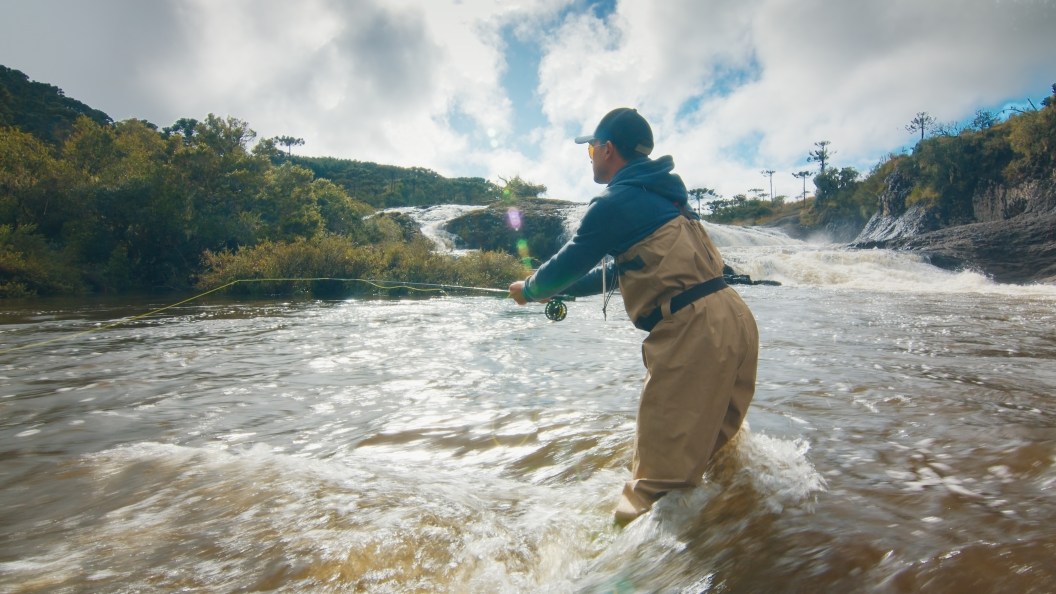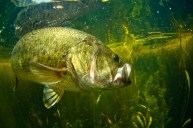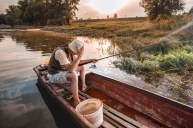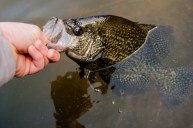As an avid angler, I have spent a lifetime fishing high-water conditions. Usually, this is in the spring, but the runoff from last winter's epic snowpack means the increased flow will continue well into the summer for many of us this year. For the anglers among us who keep a countdown on for the first moment we can fish creeks, streams, and rivers, we're heading out despite high water.
But it's really important to keep safety in mind as the remarkable snowpack slowly melts and makes for gushing rivers with surprisingly strong currents. Plus, a refresher of how fish act differently in high water is always helpful, whatever fish you're targeting.
How to Stay Safe Fishing High Water
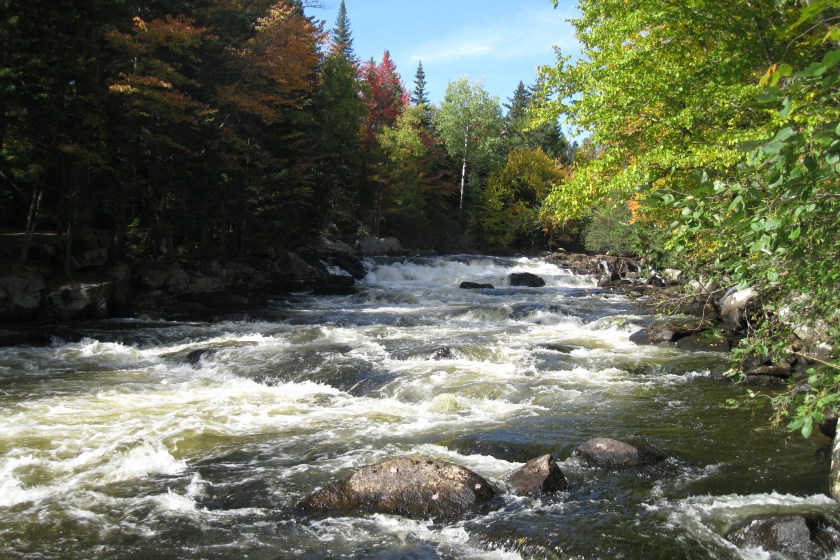
Craig Raleigh
You're going to be faced with a strong current so the way you attack it is very important. Many of the same rules of cold water wading safety will apply here, but here are the key safety measures you should take:
Don't Fish Alone
Fishing alone might be fine in low water, but this time of year, having a buddy to act swiftly if you get pulled under or to call for help if something happens is just non-negotiable.
Bring a Wading Staff
I really like a good quality wading staff in high water, most importantly to help keep your balance but also to help you explore the bottom. Knowing what lies on the bottom helps determine where to plant your next footstep, which can be the difference between staying dry and ending up in the water.
Wade In at The Right Angle
In my experience, if you want to wade out into the flow, traversing it at a right angle (across the flow) is more difficult. When you see a promising fishing spot, start towards it a little further back and go at an angle that takes you just a bit into the current. This will give you a better angle of attack and allow you to time to plant your back foot for a better stance.
Don't Wade Too Deep
In a strong current, the deeper you try to wade, the more dangerous it becomes to keep your footing. Wear a wading belt, take short steps, and turn back at the first sign of trouble.
READ MORE: The 5 Rules of Cold Water Wading Safety
How to Find Fish
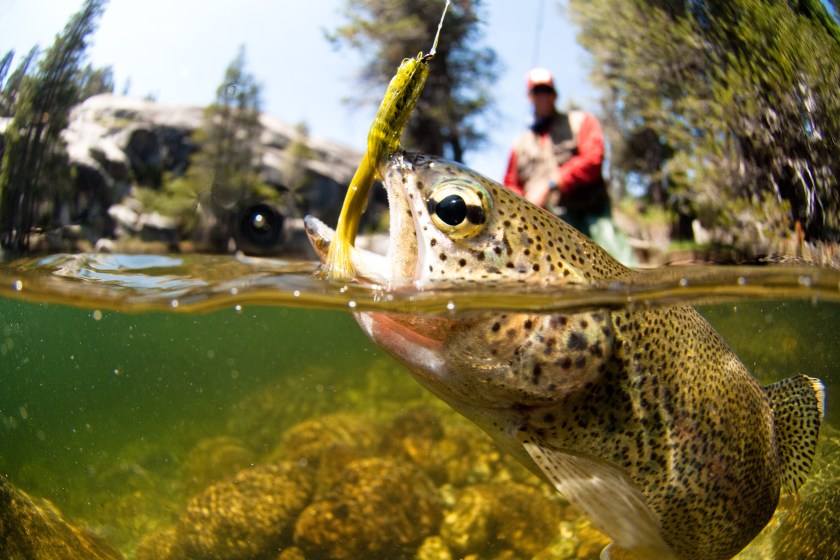
Getty Images, ANDY_BOWLIN
Expecting fish to be in their normal haunts during a high-water event usually invites failure.
Check Ahead for Muddy Conditions
We've all wet a line in muddy water because we were so eager to fish—and I have actually caught something this way once or twice. But that win is few and far between, in my experience.
It's always more reliable to fish high water that has cleared up or is stained, rather than straight up muddy conditions, regardless of what species you're going to be targeting.
Staying up to date with your local weather report will go a long way towards deciding to make a scouting run to the water to see if it's ready to be fished. Sometimes, you will find that even if the water is "fishable" you may still have to give in to the fact that the conditions may just be too unsafe to try.
Stay Out of the Main Current
Fish will try their best to get out of the strongest flow. Edges with a softer current will hold fish, sometimes multiple.
The same is true for those seams that exist between fast water areas. This is where the fish can find just enough of a break in the current to feed and return without expending too much energy.
READ MORE: How to Read a River for Fishing Success
Look for Breaks
Now is the time to really rely on the breaks that we so often look for when it comes to fishing moving water: boulders, backwater edges, and pocket water created by rock piles that are normally above the water.
Adjust Your Gear and Tactics
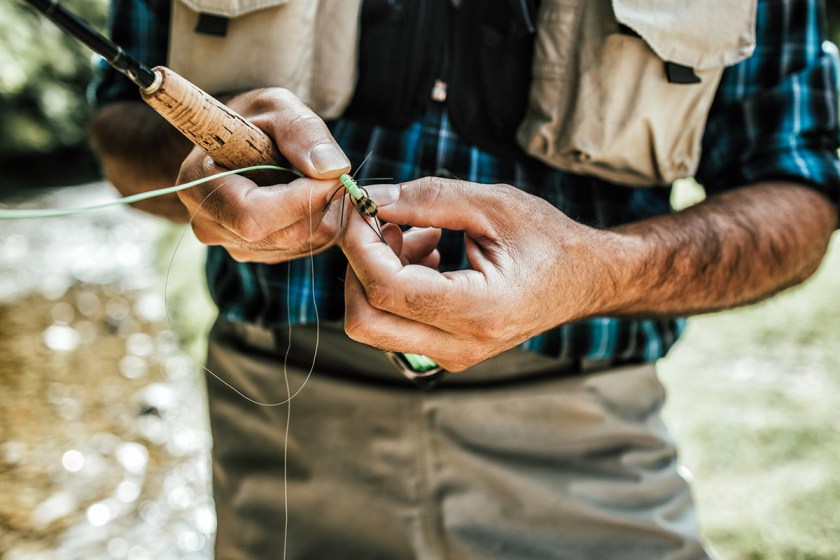
Whether the water is clear or has a stain to it, fish will still need to feed to survive so having the right gear at the ready means everything.
Use the Right Lines
For fly anglers, a 6-weight rig with a sinking leader works well to keep your offering in the strike zone longer to cover the most water.
For conventional anglers, you'll want to stick with a good-quality fluorocarbon line which will stay down in the water column long enough to attract some attention to your bait.
Observe What They Fish Are Eating
It's not the fish that have trouble seeing in this type of water, but instead the fisherman. Interestingly, this can make for a better experience since you can get closer to your target and will have more opportunity to see what they're eating in the high water.
Since a higher water flow obviously moves much more water, the fish residing there have a much wider variety of choices floating past them. Keep your eyes on the stream to try and see what it is that may have gotten caught up in the raising water. Consider even carrying an insect specific net to seine the water for bugs and other critters.
Keep It Moving
Whatever species you're targeted, fish with an eye for shorter, faster retrieves while trying to give action to your bait.
Look for Trapped Minnows
Sometimes you will find that baitfish have been trapped by rising water and pummeled to the point of no return, making them an easy target for opportunistic fish. This can mean more fish will be targeting minnow imitations, particularly those that stand out like a gold and black stickbait or a silver-patterned streamer.
Consider a Heavier Fly for Trout
Trout, in particular, can be targeted in higher water with heavier flies. Sometimes, a bounce (split-shot) rig will work. Things will happen much faster in a heavier flow so be ready for quick taps and nudges—these aren't fish, but this will let you know that your offering is getting under the worst part of the current to where the fish are.
One of the best parts of fly fishing in higher water is that you can really get deeper into your fly box. Baits like craneflies, caddis, and even minnow imitating streamers work well to get the attention of fish that know high water means more food. Terrestrials like worm imitations are especially good in a heavy flow.
Adjust Your Usual Lures
For fishing warm-water species in moving water, lures that work in a normal flow can still work—but with a few provisos: Try a sinking Rapala instead of the regular floating version. Sure, you may get a few more snags, but it will teach you to stay on top of your retrieve and pay attention.
For Bass in Backwater Holes, Trial and Error
Bass can be more attentive to your bait in murkier water, but only to a point. For one thing, they will relate much more to backwater areas, and especially newly-flooded brush and timber, which will give you an advantage.
Focusing on these areas gives an angler the time to try several different patterns until you can narrow in on one that works. Football jigs rigged jig-and-pig style are more accurate to toss and stay in the strike zone longer.
READ MORE: Post-Spawn Bass Fishing: How to Hook Them When They're Tired and Hiding
